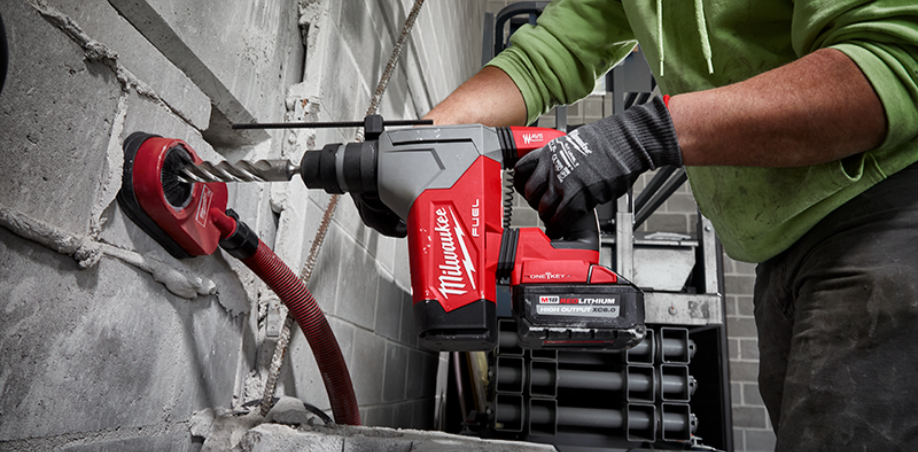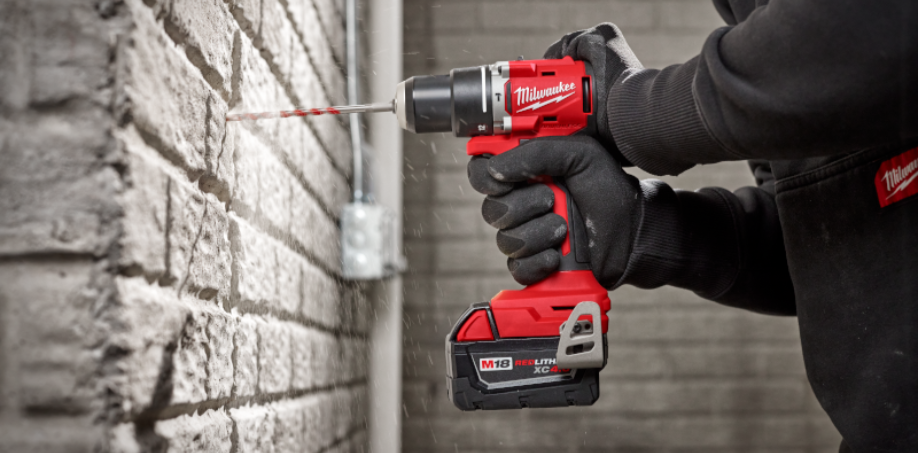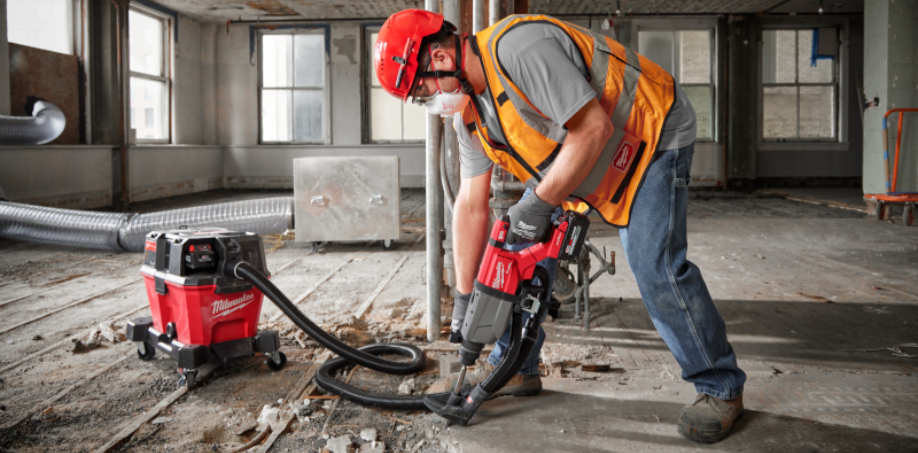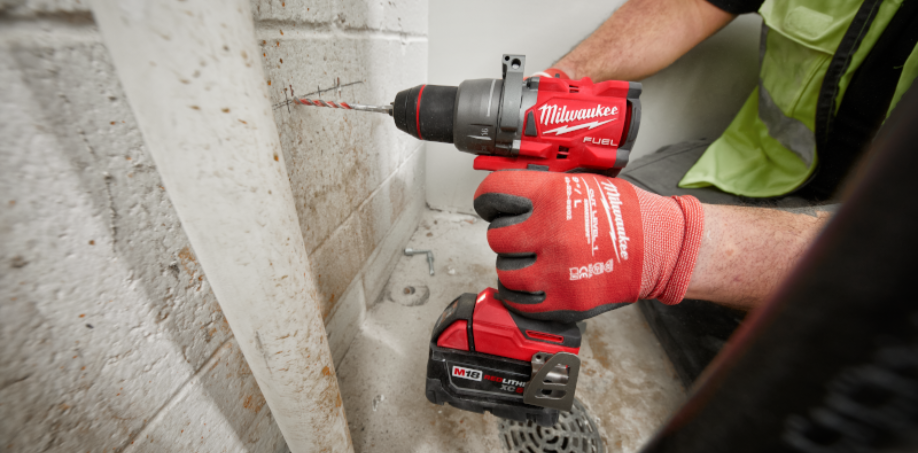Rotary Hammers vs. Hammer Drills: Which Tool is Right for You?

When it comes to drilling into tough materials like concrete and masonry, choosing the right tool can make a world of difference. Rotary hammers and hammer drills are both designed for this job, but they operate differently and are suited to different tasks. In this guide, we’ll explore what each tool is, how they differ, and how to choose the right one for your needs.
What is a Rotary Hammer?
A rotary hammer is a powerful tool specifically designed for heavy-duty drilling into concrete, stone, and masonry. It combines a hammering action with rotary motion, making it efficient at breaking up and drilling into tough materials. Unlike a regular drill, a rotary hammer doesn't just rotate the drill bit it drives it forward with intense force. This is achieved through a piston system that generates pressure and then pushes the bit into the material.
What are Rotary Hammers used for?
Rotary hammers are used for drilling large holes in concrete and harder materials. They're also used for chiseling tasks and other applications where significant power and force are needed, such as breaking up concrete or removing tile. Given their power, rotary hammers are commonly used in construction and by professionals who need to drill through tough materials regularly.

What is a Hammer Drill?
A hammer drill is a versatile tool that combines the rotary action of a standard drill with a hammering action. It's designed to drill into concrete, brick, and other masonry materials, but it's not as powerful as a rotary hammer. The hammering action in a hammer drill is created by two ridged discs that strike against each other, creating a vibration that drives the drill bit forward as it rotates.
What are Hammer Drills used for?
Hammer drills are used for light masonry tasks, such as drilling holes in brick, mortar, or concrete blocks. They work well for occasional use and for smaller holes, typically up to 1/2 inch in diameter. Hammer drills are also a good choice for homeowners and DIYers who need a versatile tool that can handle both wood and masonry drilling without the need for a separate rotary hammer.

Rotary Hammer vs. Hammer Drill
While both tools are designed to drill into masonry, they differ significantly in terms of power, mechanism, and application.
Power and Mechanism: The Rotary Hammer uses a piston mechanism to generate a hammering force, making it much more powerful than a hammer drill. It can drill larger holes and is suitable for heavy-duty tasks.
The hammer drill uses ridged discs to create a vibration that drives the bit forward. It is less powerful and relies on the user's pressure to enhance the hammering action. It's ideal for smaller holes and lighter masonry work.
Bit System: A Rotary Hammer utilizes SDS-Plus or SDS-Max bits that lock into place without a key. These bits are designed to move independently, enhancing the hammering action.
The Hammer Drill uses standard drill bits. These bits are less specialized and can be used with both hammer and regular drills, but they are less effective for heavy-duty tasks.
Application: The Rotary Hammer is best suited for tasks that involve drilling large or numerous holes in concrete or masonry. It can also be used for light demolition and chiseling work. The Hammer Drill on the other hand, is only suitable for occasional masonry drilling, smaller holes, and for users who need a versatile tool that can handle both wood and masonry.
Versatility: A Rotary Hammer offers multiple modes, including rotary-only, hammer-only, and rotary hammer, making it a versatile tool for various applications. The Hammer Drill offers a drill-only mode and a hammer mode, allowing it to be used for wood, metal, and masonry drilling.

How to Choose the Right Tool for the Job
Choosing between a rotary hammer and a hammer drill depends on the nature and scale of your project. Here are some factors to consider:
Type of Material: If you are drilling into hard materials like poured concrete, stone, and dense masonry the Rotary Hammer is the best choice. While the Hammer Drill is suitable for softer masonry materials like brick and mortar, or for light-duty drilling in concrete blocks.
Hole Size and Quantity: If you need to drill large holes (over 1/2 inch) or a large number of holes in concrete, a rotary hammer is the more efficient choice. It drills faster and requires less effort from the user. For smaller holes (up to 1/2 inch) and occasional use, a hammer drill is sufficient and more cost-effective.
Frequency of Use: The Rotary Hammer is designed for frequent and heavy-duty use, making it a suitable investment for professionals who work with concrete and masonry regularly. The Hammer Drill is perfect for homeowners, DIY enthusiasts, and professionals who only need to drill into masonry occasionally.
Budget: The Rotary Hammer is generally more expensive due to its power and versatility. It’s worth the investment if you have regular, heavy-duty masonry work. A Hammer Drill is more affordable and offers great value for those who need a tool for occasional masonry and other drilling tasks.
When it comes to drilling into concrete and masonry, choosing between a rotary hammer and a hammer drill depends on the specific needs of your project. Rotary hammers are the more powerful and efficient choice for heavy-duty tasks, while hammer drills are perfect for light masonry work. By understanding the differences between these tools and considering factors like material type, hole size, and frequency of use, you can select the right tool for the job. If you have any questions or would like to make a purchase, give our sales team a call at 877-446-4352.

